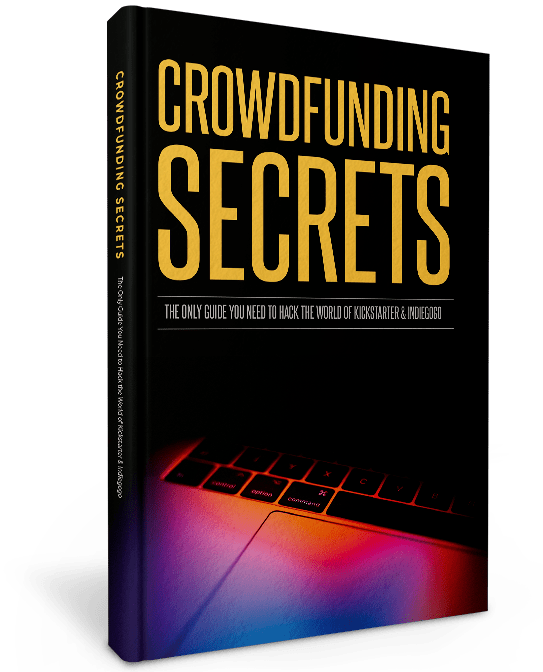Running an ecommerce store can feel a bit like hosting a party—you’ve sent out the invites, set the mood, and now you’re waiting for the guests to arrive. But what happens when they show up, take one look around, and then head for the door without even grabbing a drink?
That, my friend, is the dreaded bounce rate in action.
A high bounce rate can be frustrating, signaling that something on your site isn’t connecting with visitors. But don’t fret—reducing your bounce rate just takes a few clever strategies and a bit of finesse.
In this article, we’ll share 15 practical tips on how to reduce bounce rate in ecommerce and keep your virtual dance floor packed.
Let’s get this party started!
What is Bounce Rate in Ecommerce and How to Measure It?
Bounce rate is one of those metrics that sounds technical but is actually pretty straightforward. In the simplest terms, it’s the percentage of visitors who land on a page of your website and then leave without interacting further.
Imagine someone walking into your store, glancing around, and then walking right back out without checking out any of the products—that’s essentially what a bounce rate measures in the online world.
For ecommerce sites, this can be particularly troubling because it means potential customers aren’t sticking around to explore your offerings. They might be leaving because your page didn’t load fast enough, they couldn’t find what they were looking for, or perhaps something else on your site just didn’t grab their attention.
To measure your bounce rate, tools like Google Analytics come in handy. It calculates bounce rate by dividing the number of single-page sessions by the total number of sessions on your site. This gives you a percentage that tells you how many visitors are bouncing off without engaging further.
Keeping track of this metric is crucial for understanding how well your site is performing and where you might need to make improvements.
What’s the Average Bounce Rate in Ecommerce?
So, you’ve got your bounce rate number—now what? Is it good, bad, or somewhere in between? The truth is, bounce rates can vary widely depending on the type of ecommerce business you’re running. But let’s break down some averages to give you a general idea.
For most ecommerce sites, an average bounce rate between 20% to 45% is considered typical.
If your bounce rate is hovering around the lower end of this range, give yourself a pat on the back—your site is likely doing a good job of engaging visitors. But if it’s creeping closer to the higher end or even surpassing it, it might be time to dig a little deeper to figure out what’s driving people away.
Keep in mind, though, that context matters. A blog post on your site might naturally have a higher bounce rate compared to a product page because users might just be there for the information.
The key is to compare your bounce rate with similar pages and industries to get a true sense of how your site stacks up.
How to Reduce the Bounce Rate on Your Online Store?
Now that you know what bounce rate is and where your site stands, it’s time to roll up your sleeves and tackle the issue head-on.
Think of your website like a promising date—you want to make a great first impression, keep the conversation flowing, and ensure they’re interested in sticking around for dessert. The last thing you want is for them to ghost you after a few minutes.
And just like in dating, reducing your bounce rate isn’t about one grand gesture—it’s the small, thoughtful details that make all the difference.
By fine-tuning different aspects of your site, from speeding up page load times to optimizing content, you can create a smoother, more engaging experience for your visitors. Every little improvement helps keep those potential customers from swiping left.
Let’s dive into 15 practical tips that will help you keep visitors on your site longer and, ultimately, guide them toward making a purchase.
Tip 1: Improve Page Load Speed
A slow-loading website is one of the quickest ways to lose potential customers. If your site takes too long to load, visitors are likely to leave before exploring your offerings.
To improve load speed, start by compressing images to reduce file sizes without losing quality.
Minimize the use of heavy scripts that can slow down performance.
Additionally, implementing a content delivery network (CDN) can help distribute your content efficiently, ensuring faster load times for users across different locations.
Tip 2: Enhance Mobile Responsiveness
With the majority of web traffic coming from mobile devices, ensuring your ecommerce site is mobile-responsive is essential.
A site that doesn’t adapt well to different screen sizes can lead to high bounce rates as users struggle to navigate or view content.
To enhance mobile responsiveness, ensure your website design is fluid and adjusts seamlessly to various screen sizes.
Test your site on multiple devices to ensure consistent functionality and user experience.
Pay attention to touch-friendly navigation, easy-to-read text, and fast load times on mobile networks.
Tip 3: Optimize Website Navigation
Effective website navigation is essential for guiding visitors to the content they’re looking for, reducing the likelihood of them leaving.
Simplify your navigation menu by using clear, descriptive labels and limiting the number of items to avoid overwhelming users.
Ensure that key sections, such as product categories and contact information, are easy to find.
Implement breadcrumbs and search functionality to help users quickly locate specific pages.
A well-structured, intuitive navigation system enhances the user experience, keeps visitors engaged, and reduces bounce rates by making it easy for them to explore your site.
Tip 4: Align Marketing Messages
Aligning your messaging across all marketing channels and your ecommerce website is essential for reducing bounce rates.
Ensure that the promises made in your ads, social media posts, and emails are consistently delivered on your website.
If a user clicks on an ad for a specific product or offer, the landing page should immediately reflect that message.
This alignment builds trust and keeps visitors engaged, as they find exactly what they expect.
Additionally, make sure your content addresses the specific needs and intentions of your audience, providing clear and valuable information that encourages further exploration.
Tip 5: Optimize Above-the-Fold Content
The above-the-fold area is the first thing visitors see on your website, making it crucial for capturing their attention.
Ensure it features a clear, compelling headline that communicates your value proposition immediately.
Use strong visuals that are relevant and appealing, and include a prominent call to action (CTA) that guides visitors to the next step.
This area should load quickly to prevent visitors from leaving before the page is fully visible.
By optimizing above-the-fold content, you create a strong first impression that encourages visitors to stay and explore further.
Tip 6. Leverage Lazy Loading for Images and Videos
Lazy loading delays the loading of images and videos until they are about to enter the user’s view, improving initial page load times.
This technique reduces the amount of data that needs to be loaded upfront, ensuring faster access to your site’s content.
By implementing lazy loading, you can maintain a rich visual experience without compromising speed, particularly on pages with heavy media content.
This not only enhances user experience but also helps reduce ecommerce bounce rate, as visitors are less likely to leave due to slow loading times.
Tip 7: Use Heatmaps to Understand User Behavior
Heatmaps visually represent user interaction on your ecommerce site, showing where visitors click, scroll, and spend the most time.
Effective ecommerce management involves regularly reviewing these insights to optimize your site’s layout, ensuring that key elements are placed where they’ll attract the most attention.
Start by reviewing key pages like your homepage and product pages.
Identify patterns—are important CTAs being ignored? Are users dropping off before reaching vital content?
Use these insights to reposition elements, optimize layouts, and enhance user experience.
Regularly updating your site based on heatmap data can help reduce bounce rates and improve overall engagement.
Tip 8: Implement Exit-Intent Popups
Exit-intent popups are triggered when a visitor is about to leave your website, offering a final opportunity to engage them.
Use these popups to present special offers, discounts, or valuable content that encourages visitors to stay or complete a purchase.
Ensure the popup is visually appealing and contains a clear call-to-action. Test different messages and designs to determine what resonates best with your audience.
However, avoid overusing popups, as they can frustrate users.
When implemented thoughtfully, exit-intent popups can effectively reduce bounce rates and boost conversions.
Tip 9: Improve Internal Linking
Internal linking is a key strategy for keeping visitors engaged on your site and guiding them to relevant content.
By strategically linking to other pages within your site, you can encourage visitors to explore more of your offerings, which can reduce ecommerce bounce rate.
Use descriptive anchor text that clearly indicates what the linked page is about, making it easier for users to navigate.
Ensure that your internal links are relevant and add value to the user experience, rather than just linking for the sake of it.
A well-structured internal linking strategy can improve both user engagement and SEO performance.
Tip 10: Create a Clear Call to Action (CTA)
A well-designed Call to Action (CTA) is crucial for guiding visitors toward the desired action on your ecommerce site, whether it’s making a purchase, signing up for a newsletter, or exploring more products.
To create an effective CTA, use concise and action-oriented language that clearly tells the user what to do next, like “Buy Now,” “Sign Up,” or “Learn More.”
Ensure your CTA stands out visually on the page, using contrasting colors and strategic placement.
Additionally, position CTAs where they make the most sense in the user journey, such as after product descriptions or near pricing information.
Tip 11: Regularly Update and Test Your Website
To maintain a low bounce rate, it’s essential to keep your ecommerce site updated and optimized.
Regular updates ensure your content remains relevant, your products are up-to-date, and your design stays modern. This keeps visitors engaged and encourages them to explore further.
Testing is equally important. Use A/B testing to compare different versions of your pages—experiment with layouts, headlines, CTAs, and even color schemes.
Analyze which versions perform better in terms of engagement and conversions.
Regularly updating and testing your site helps you identify and address potential issues before they cause visitors to leave.
Tip 12: Improve Product Descriptions
Effective product descriptions are essential for engaging visitors and reducing bounce rates.
A well-crafted description not only highlights the features of a product but also communicates its benefits and how it meets the customer’s needs.
To improve your product descriptions, focus on clarity and detail—avoid vague language and instead, provide specific information about the product’s size, material, functionality, and use cases.
Use bullet points to make key details easily scannable, and consider incorporating keywords naturally to improve SEO.
Additionally, enhance descriptions with high-quality images or videos to provide a complete understanding of the product, encouraging users to stay and make a purchase.
Tip 13: Utilize Behavioral Targeting
Behavioral targeting allows you to personalize the user experience based on a visitor’s previous interactions with your site.
By analyzing browsing history, past purchases, or search behavior, you can tailor content, product recommendations, and special offers to meet the specific interests and needs of each visitor.
For example, showing related products based on what a visitor has previously viewed or offering discounts on items they’ve shown interest in can significantly enhance engagement.
Personalizing the experience in this way makes visitors feel more connected to your site, reducing bounce rates and increasing the likelihood of conversion.
Tip 14: Offer Live Chat Support
Live chat support provides real-time assistance to visitors, helping them find what they need and addressing any questions or concerns they may have.
By offering live chat, you can quickly resolve issues that might otherwise lead to a visitor leaving your site.
It also adds a personal touch, making customers feel valued and supported throughout their shopping experience.
Ensure that your live chat is easily accessible on all pages and staffed adequately to handle inquiries promptly.
Effective live chat support can improve customer satisfaction, reduce ecommerce bounce rate, and increase conversions.
Tip 15: Simplify Your Homepage
Your homepage is often the first impression visitors have of your site, so it’s crucial to keep it clean and focused.
A cluttered or overwhelming homepage can confuse visitors and lead them to leave quickly.
Simplify your homepage by prioritizing the most important information and calls to action.
Make navigation intuitive and ensure that key elements like product categories, promotions, and contact information are easy to find.
A streamlined, user-friendly homepage helps guide visitors smoothly into the rest of your site, reducing bounce rates and encouraging deeper engagement.
Conclusion
And there you have it—15 practical tips on how to reduce bounce rate in ecommerce and keep your online store from turning into a ghost town.
Reducing bounce rates isn’t about one magic fix; it’s about those small, thoughtful tweaks that create a welcoming, engaging environment for your customers.
Whether it’s speeding up your site, making your content more relevant, or crafting that perfect call to action, every improvement is a step toward turning casual visitors into loyal customers.
Keep refining your approach, regularly test what works best, and don’t be afraid to try new strategies. Soon enough, you’ll see your bounce rate drop, your engagement rise, and your sales soar.
Happy international Reduce-Your-Bounce-Rate day (I totally haven’t made that up) !




Comments